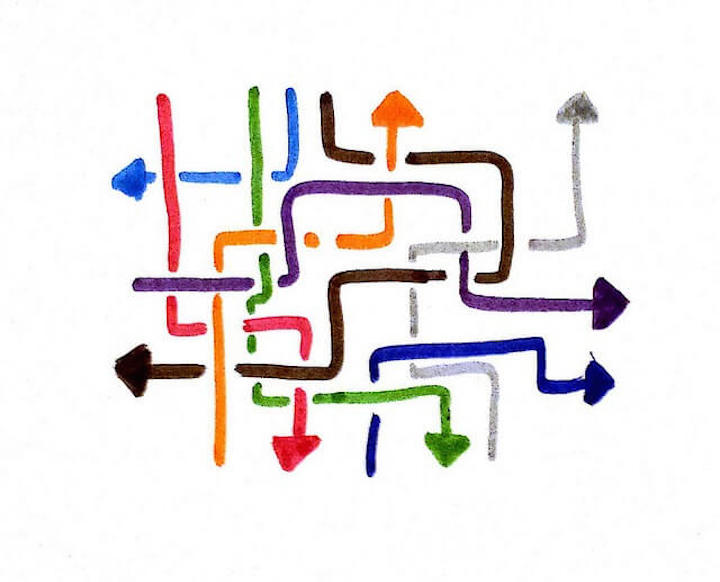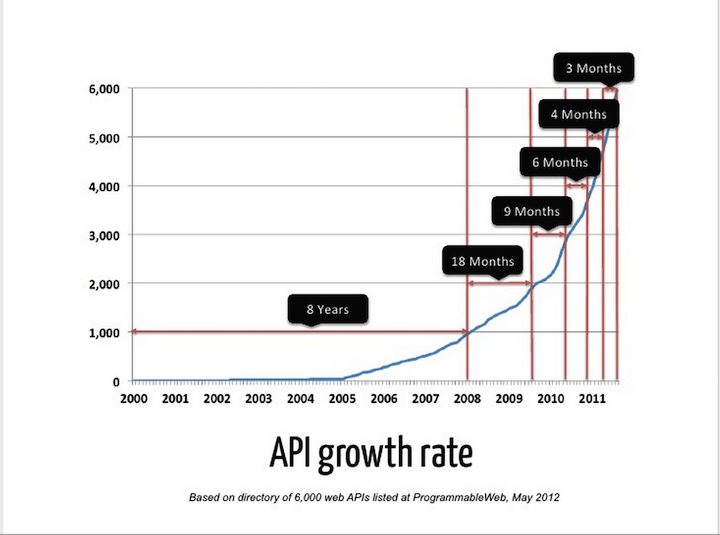Open Data Gets Better With Open APIs
The use of APIs has been growing exponentially over the past 10 years and this means big things for the open data movement.
Open data, although great, isn’t enough on it’s own.
Data needs people to make it accessible, understood, and shareable.
This is where APIs come in.
What is an API?
APIs, application programming interfaces, are the guidelines that allow applications to talk to one another.
APIs are awesome.
They increase your data’s accessibility for both you and 3rd parties, while also helping to shape a better user experience due to their uniform protocols.
They are almost everywhere. You can find them driving the apps on your cell phone and desktop, and connecting applications. APIs are why you can Tweet, Facebook, and Instagram your posts with a single click.
Some APIs are private and therefore can only be used by developers that have access (usually that companies employees), others are public or open.
The use of open APIs has become increasingly popular. Some naysayers worry about how this can negatively affect a business. They worry about giving access to parts of their company/information, but with open APIs 3rd parties are able to create and build on the service/product and therefore help make it better.
It’s a win/win in our opinion.
 API Calls via Tsahi Levent-Levi
API Calls via Tsahi Levent-Levi
The darkside to APIs
As more companies are opening their APIs, some really cool stuff is happening. We are finding widgets, applications, extensions, etc. that are making user experience better. The downside to this is that the developers working on these projects have little control. If the company decides to close the API, change the license they have full control so developers can be left up a creek with no paddle.
These issues aren’t as prevalent within the open data community. The motives behind sharing the data are based on providing accessibility and usability of the data and they recognize that making open APIs means their data is getting shared.
Open Data <3 Open API
As open data organizations move toward sharing their data through open APIs, there is an increase in developer interest and the creation of open data platforms. This is important; it’s not enough for the data to just be there, it needs to be accessible.
Programmers are hungry and creative people. You give them an open API and beautiful things happen. Data visualizations, mobile applications. The possibilities are endless.
Why are open apis important for open data?
- Very few people use the hard datasets in raw format, mostly analyst and policymakers that enlist the data in the first place. Open APIS allow for greater syndication of the data.
- Developers don’t want a hassle. Downloading and manipulating files is a pain in the a$$. They desire free and well documented APIs for better accessibility and in turn create web applications, data visualizations and more.
- Data collection is easier. No downloading files, no paper pushing, the data is right there; ready to be used.
What needs to be considered for open APIs?
Documentation is the MOST important aspect to your API. Cathy Deng from datamade provides a great blog post on documentation and how to do it right.
“Why is it important?”, you ask.
These are the guidelines to using your API they help you with troubleshooting and they let developers know what they can and can’t do.
Don’t forget to add a license to help eliminate any confusion. Opendefinition.org has a great resource for licenses.
Are you ready to be a Data Detective?
Build something with an Open API. Here is a short list of websites that have data waiting to come alive through Open APIs.
To keep up to date with all of Katie’s posts and work, follow her on GitHub and Twitter.
